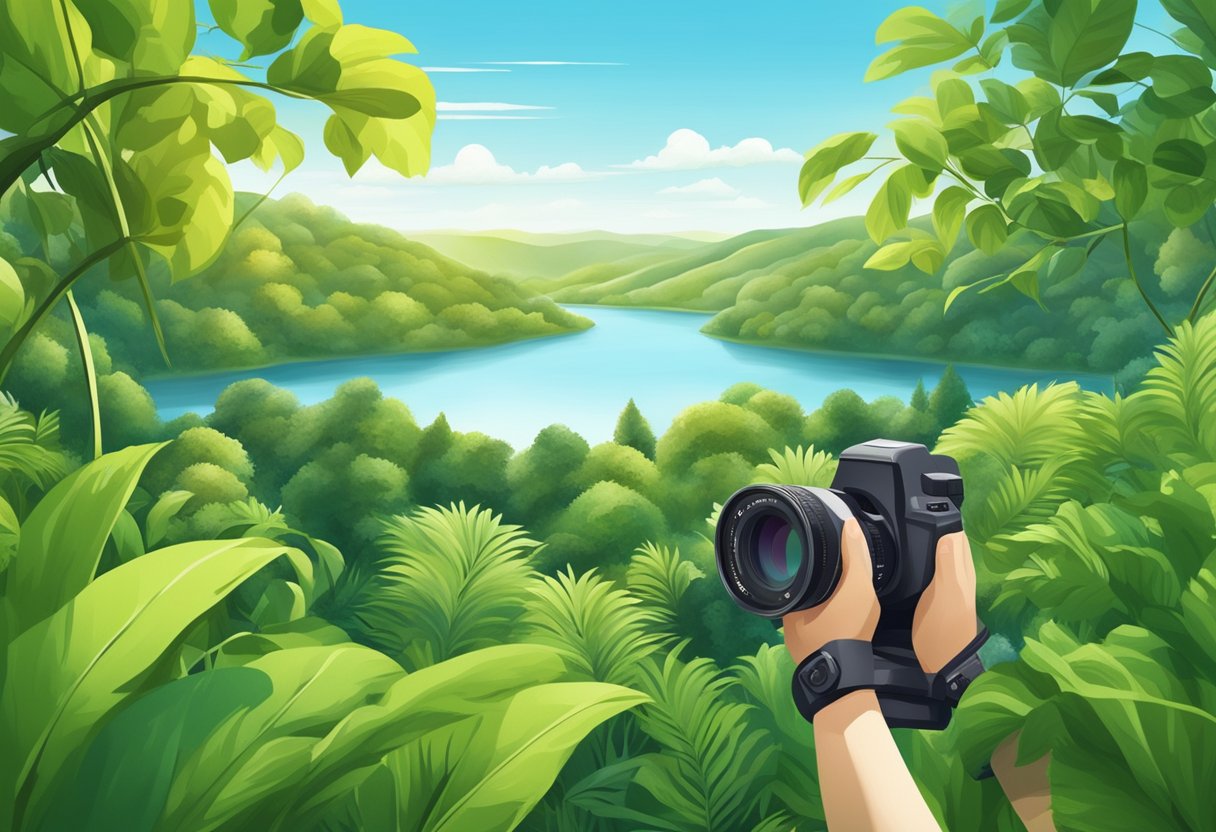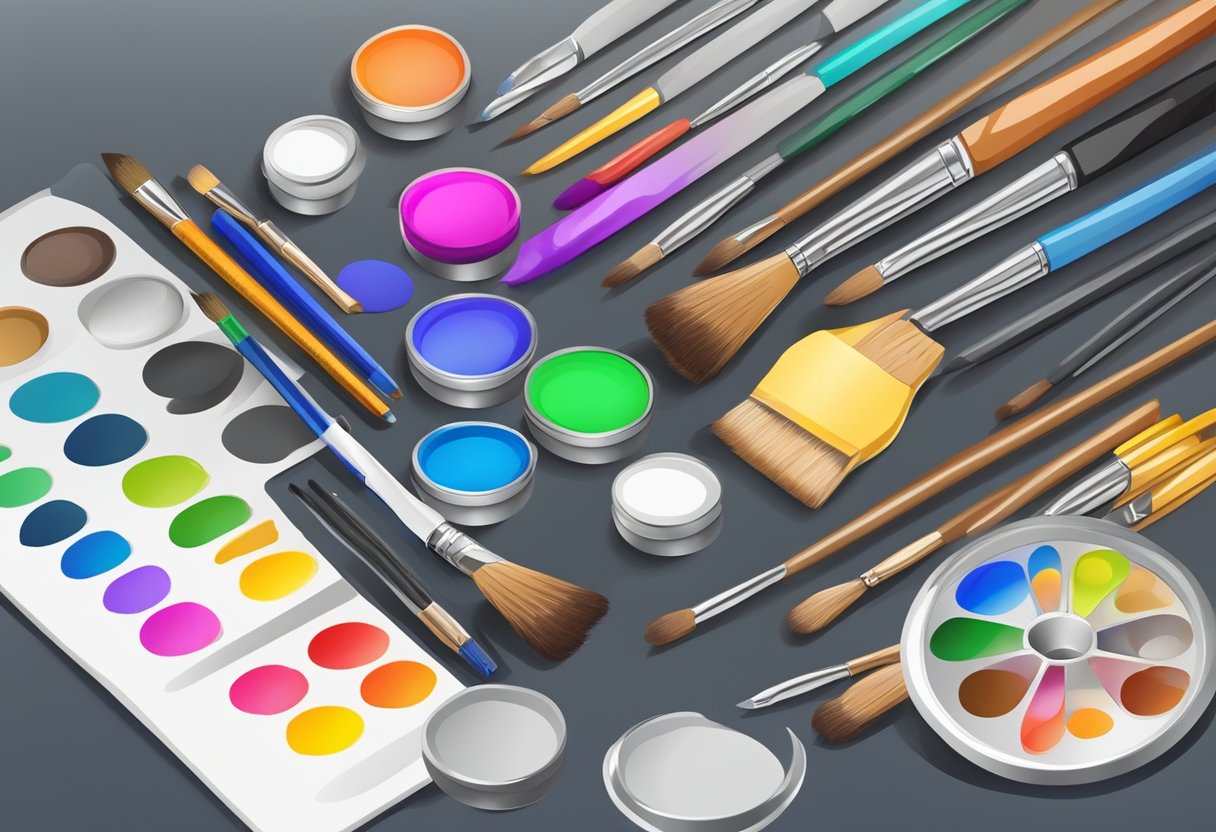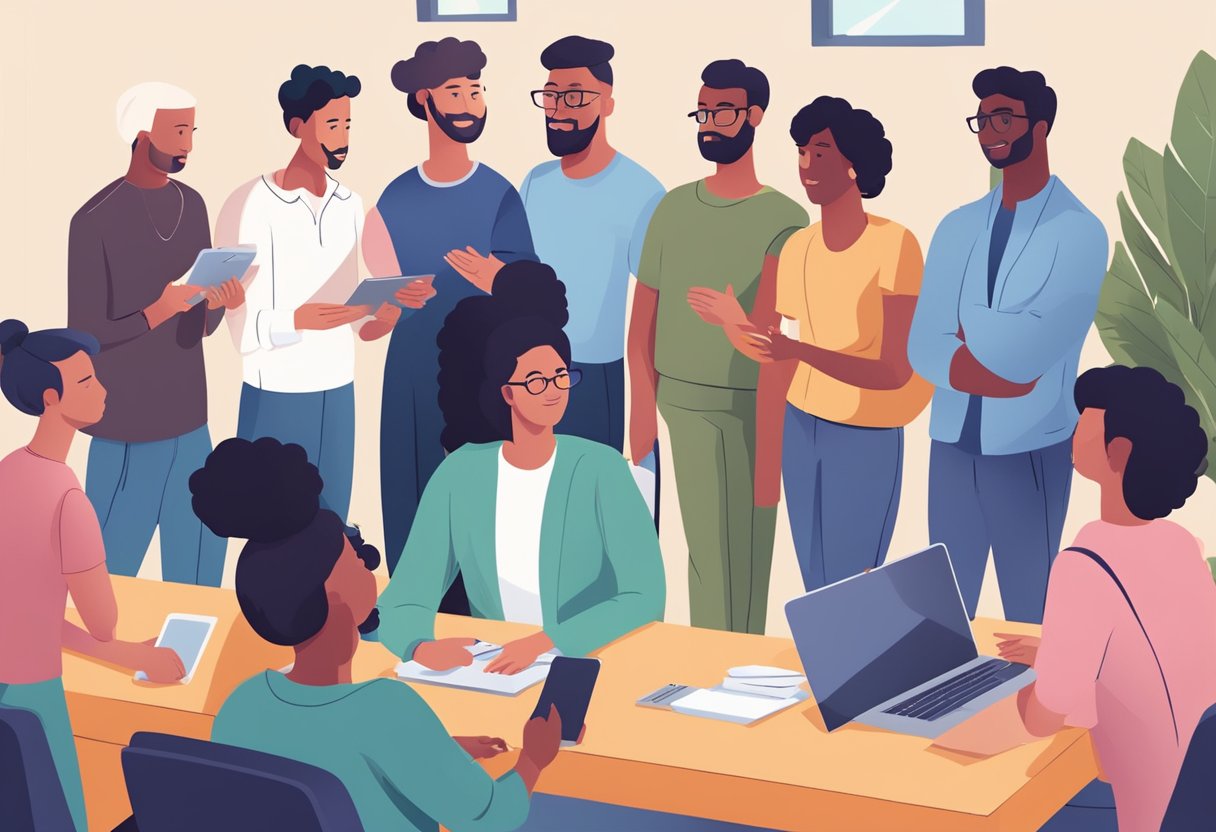The potential of Midjourney prompts is vast, and with a handful of useful tips, you’re set to unlock a world of visual storytelling that is vivid and impactful.
Imagine being able to steer the outcome towards more accurate representations of your ideas, or invoking a unique style with just the right wording.
Getting Started with Midjourney
Embarking on your Midjourney adventure opens up a world of creativity and digital artistry. This section will help guide you through initial steps, from understanding how prompts work to creating your first masterpiece.
Understanding Midjourney Prompts
Midjourney operates on prompts—short, directive texts—that your Midjourney Bot interprets to generate images. Crafting a prompt effectively is like whispering in the bot’s ear; the more thoughtful your words, the closer the result to what you imagine. To steer it toward more unique outcomes, try using the -creative tag, which can induce a more striking color palette or an abstract design. Each word in your prompt is seen as a token, a critical puzzle piece used by the AI to fashion your visual output.
Signing Up and Navigating the Discord Server
To begin, sign up on Discord and join the Midjourney server. Once inside, you’ll find yourself among a community of fellow creatives. Navigate to the #Newbies channel; here’s where you can soak up inspiration and learn the ropes. Look for Midjourney channels on the sidebar—a handy compass as you explore this new world.
Setting Up Your First Prompt
It’s time to initiate your very first prompt. Start in the Midjourney Discord channel and type /imagine followed by your prompt. Consider starting simple; sometimes, a single word can unleash surprisingly detailed results. Monitor the AI’s interpretation, and don’t hesitate to adjust parameters—think of this as your artistic collaboration with the Midjourney Bot.
Remember, your first foray is just the beginning. Each prompt is a step further on your journey, with the community and the bot as your companions.
Crafting Effective Prompts
Crafting effective prompts is essential in steering Midjourney—an AI model—to produce images that match your vision. You’ll need to blend precision and control with your language to guide the AI effectively.
Tip 1: Leveraging Keywords for Precision
When formulating your text prompt, think of keywords as the GPS that will direct the AI to your desired outcome. Each keyword acts as a specific coordinate on the map to your final image. Here’s how to do it:
- Be Descriptive: Instead of “dog”, try “fluffy golden retriever puppy”.
- Specify Style: Mention if you want it to be “watercolor” or “neo-noir style”.
For example, instead of “beach”, refine your prompt to “sunset at a serene, palm-lined beach with pastel skies”.
Tip 2: Utilizing Parameters for Control
Midjourney allows you to integrate parameters into your prompts for heightened control over the output. These act as dials and levers for finetuning aspects like style, mood, or detail.
- Style Parameters: Insert parameters such as
--vibrantto ensure the style reflects your intent for the image. - Control Complexity: Use
--detailto command the level of intricacy in the AI’s rendering.
Imagine you’re requesting an image of a cityscape; you could enhance precision by including parameters like --style 5 for a specific artistic flair, or --hd to up the resolution.
In summary, combine strategic keywords with tailored parameters to produce prompts that faithfully capture your vision in Midjourney’s creations.
Exploring Artistic Styles
When diving into Midjourney, you’ll quickly find that your creativity is the only limit. With the right prompts, you can unlock a plethora of art styles to give your projects a unique flair.
Tip 3: Incorporating Art Styles into Prompts
To stylize your Midjourney images, it’s crucial to weave specific art styles directly into your prompts. This directs the AI to craft images that align with your desired aesthetic. For instance:
- Oil Painting: Add texture and depth by using terms like “oil painting finish” or “reminiscent of Van Gogh’s brushwork.”
- Watercolor: For a more fluid and translucent feel, phrases like “watercolor wash effect” or “in the style of Monet” can achieve stunning results.
Remember, the more detailed your prompt, the more tailored your Midjourney creation will be.
Tip 4: Discovering Unique Looks with Midjourney
Uncover a world of art you’ve never seen before by experimenting with Midjourney’s vast capabilities to stylize your images. Here’s how:
- Chalk Art: Specify the texture by prompting with phrases like “chalk art on sidewalk” and you can even add “use vibrant colors” to inject life into your piece.
- Fractalism: To explore an avant-garde style, inputs like “fractalism pattern overlay” or “in the essence of fractal art” guide Midjourney to generate complex and abstract designs.
By intertwining the art style with descriptors in your prompts, Midjourney can take you on an artistic journey far beyond the conventional.
Enhancing Image Quality

To capture stunning visuals using Midjourney, focus on the composition and tone of your scene. Quality images begin with thoughtful arrangement and precise use of color and lighting.
Tip 5: Adjusting Composition and Scene Elements
When creating with Midjourney, you have the ability to customize the composition and various scene elements of your image. Start by being specific with your descriptions— the more detailed your prompt, the better the AI can arrange the elements. For example, if you want a balanced composition featuring a main subject, such as a cat, use detailed prompts like “Portrait of a serene cat, centered, with space for text on top.”
- Prompt Example for Balance: “A cat sitting squarely in the middle of a sunlit room, with equal space on either side.”
- Prompt Example for Complexity: “A cluttered antique shop interior with numerous items scattered across shelves.”
Tip 6: Fine-Tuning Color and Lighting
Color and lighting are pivotal for setting the mood of your images. If you’re aiming for a warm, sunset scene, emphasize hues in your prompt such as “golden,” “amber,” or “crimson.” When you’re after a specific lighting style, include it directly, like “soft ambient light” or “harsh shadows.”
- Prompt Example for Color: “A lush forest at golden hour, with sunlight filtering through amber leaves.”
- Prompt Example for Lighting: “A street corner at night, illuminated by the harsh light of a single streetlamp.”
When directing Midjourney, remember that your prompts are the blueprint. Use clear, descriptive language to guide the AI, considering the balance of composition and the emotional impact of color and lighting.
Expanding Creative Horizons

In the realm of Midjourney, expanding your creative horizons means branching out into new artistic territory. Here’s how you can push the boundaries of your imagination using abstract concepts and emotional depth.
Tip 7: Experimenting with Abstract and Conceptual Art
When you begin crafting prompts for abstract and conceptual art, think outside the box. Embrace the novelty of:
- Shapes and Colors: Use unexpected combinations, like “geometric shapes bathed in neon light” or “shadows intertwining with pastel hues.”
- Metaphorical Language: Describe concepts like “the taste of tomorrow” or “the sound of solitude”. This approach can lead to surprising and evocative imagery that stretches the limits of visual representation.
Here’s an example:
“Imagine a world where time is visible – clocks melting in a Dali-esque landscape.”
Tip 8: Employing Emotional and Mood Elements
To weave emotion and mood into your art:
- Adjectives Are Key: Be descriptive with your feelings. A prompt like “serene morning mist enveloping a tranquil village” instills a sense of peace.
- Weather and Lighting: Utilize elements like “a piercing sunray cutting through ominous storm clouds” to convey atmosphere and tone.
Sample prompt:
“Capture the melancholy of an abandoned playground at dusk, with swings slowly swaying in a cold breeze.”
Optimizing Image Dimensions

When working with Midjourney, understanding and controlling your image dimensions can be the difference between good and great visuals. Tailoring the aspect ratio and resolution paves the path for crisper and more impactful imagery.
Tip 9: Understanding Aspect Ratios and Resizing
Your aspect ratio plays a critical role in image composition. It’s the relationship between width and height, typically represented by two values separated by a colon, like 4:3 or 16:9. When resizing images in Midjourney, you need to maintain your desired aspect ratio to avoid distortion.
To do so, consider the context of where your image will be displayed. Profile pictures work well with a 1:1 ratio, which equates to a square. For cover photos that stretch wide, a wider aspect ratio like 820:312 balances coverage and detail, ensuring a proper fit on various devices.
Tip 10: Managing Image Upscale and Resolution
Once the aspect ratio is set, focusing on the upscale and resolution is your next step. If you increase the resolution by upscaling the width and height, ensure that the aspect ratio remains unchanged to maintain image quality. Keep in mind that higher resolutions will provide more detail but may result in larger file sizes.
For instance:
- An increase from 800×600 to 1600×1200 doubles the resolution while preserving the 4:3 aspect ratio.
- Upscaling should be done considering the final use. If it’s for a high-definition display, aim for a larger resolution that maintains clarity even when viewed on larger screens.
By following these tips, you can ensure that your images look their best, no matter where they are displayed.
Mastering Prompt Refinement

Refining prompts is the cornerstone of generating one-of-a-kind images with Midjourney; it’s about being precise yet inventive with your language. Let’s break it down into actionable strategies.
Looking for more niche ideas: We have the largest collection of how to make money with ChatGPT articles on the internet here
- 10 Ways Business Analysts Can Make Side Income Using ChatGPT
- 10 Ways Travel Enthusiasts can make side income Using ChatGPT
- 35 ways to use the Code Interpreter of ChatGPT to make money
- 10 Ways Moms Can Make Side Income Using ChatGPT
- 10 Ways Car Lovers Can Make Side Income Using ChatGPT
- 10 Ways Artists can make extra money Using ChatGPT
- 10 Ways Architects Can Make Side Income Using ChatGPT
- 10 Ways Americans can make money using ChatGPT
- 10 Ways Tech Geeks can make side money Using ChatGPT
Tip 11: The Role of Negative Prompting
Negative prompting is a method to refine your output by telling Midjourney what you do not want in the image. By specifying what to exclude, you can shorten the path to your desired result. For example, if you want a serene beach scene without people, you might use: “Imagine a deserted beach at sunset, no people in the frame, warm colors.” This helps steer the AI away from populating your beach with unwanted figures.
Tip 12: Synonyms and Grammar for Unique Images
Synonyms and grammar play a powerful role in diversifying your results. Changing even a single word can lead to a unique image that stands out. Instead of using a commonly used word like ‘happy’, try ‘elated’ or ‘joyous’ to convey a more specific emotion. For example:
- Common prompt: “a happy dog in a park”
- Refined with a synonym: “an exuberant canine frolicking in a sunlit meadow”
Similarly, experimenting with grammar structure can yield creative results. Consider altering the sequence of descriptive words or adding adjectives to create a more vivid picture.
- Standard prompt: “a large, ancient tree”
- Grammar modified: “an ancient tree, towering and wide, its branches sprawling like nature’s embrace”
By refining your approach to wording and structure, your prompts will guide Midjourney to produce truly distinctive and captivating images.
Utilizing Advanced Features
Mastering Midjourney’s advanced features is like having a secret toolkit at your disposal. Understanding how to effectively use seeds and variations as well as exploring multi-prompt and remix modes can significantly enhance the uniqueness and quality of your creations.
Tip 13: Harnessing the Power of Seeds and Variations
Think of seeds as the DNA for your AI-generated images. Each seed you input can produce a distinct output, even with the same prompt. To put this into practice, use the --seed <number> option with your command to replicate a previous result or explore new variations. For example: imagine prompt: a futuristic cityscape --seed 12345.
To try different variations, use the --v command:
--v 5produces five different variations of your initial image.- Keep in mind that prompt weights (
--ar) can influence how each element is emphasized in the final image.
Tip 14: Exploring Multi-Prompt and Remix Modes
Multi-prompt allows you to combine multiple ideas within a single image. You can control the influence of each by using prompt weights. You would format this as imagine prompt1:2 prompt2:1, where the numbers after colons represent their respective weights.
Remix mode, on the other hand, provides a way to edit existing images by changing elements to your liking. To activate remix mode, use the command --remix <Image ID>. This re-imagines the initial image, potentially leading to surprising and engaging results.
By exploring the capabilities of seeds and variations and leveraging multi-prompt and remix modes, you can take your creative work to the next level with Midjourney. Remember, the more specific you are with your commands, the more control you’ll have over the outcome.
Integrating Technical Elements

In your journey to master Midjourney prompts, understanding how to integrate technical elements can streamline your creative process and optimize your usage of the platform. Let’s go over how to work effectively with AI models and GPU minutes, as well as how to tweak your prompts for faster results.
Tip 15: Working with AI Models and GPU Minutes
When you’re crafting Midjourney prompts, it’s essential to consider your utilization of AI models and GPU minutes. Different AI models can produce varying artistic styles and qualities, so choosing the one that best suits your vision is key. Be mindful that more complex or detailed prompts may consume more GPU minutes. To manage your GPU usage:
- Choose your model wisely: Select a model that aligns with the complexity of your project.
- Monitor your usage: Keep an eye on your GPU minutes to avoid unexpected depletion.
Tip 16: Tweaking Prompts for Faster Results
If you want to obtain results more quickly, adjusting your prompts can be quite effective. The fast mode parameter is a game-changer, enabling you to get outputs at a faster rate. Consider these specifics:
- Use fast mode: Simply add
--fastto your prompt to speed up the generation process. - Simplify your parameters: You might be using too many or too intricate parameters that slow down the process. Keep your prompt concise.
By paying attention to these technical aspects, you can enhance your Midjourney experience, ensuring a smoother, more efficient creative session.
Tip 17: Joining the Midjourney Community

When you dive into Midjourney, it’s not just about creating; it’s also about connection. Joining the Midjourney Discord server is a seamless process that opens a world where sharing, learning, and networking thrive.
Looking for more inspiration 📖
- Sam Altman’s secrets on how to generate ideas for any business
- 6 Greg Brockman Secrets on How to Learn Anything – blog
- The secrets behind the success of Mira Murati – finally revealed
- Ideas to Make Money with ChatGPT (with prompts)
- Ilya Sutskever and his AI passion: 7 Deep Dives into his mind
- The “secret” Sam Altman blog post that will change your life
- 4 Life-Changing Lessons we can learn from John McCarthy – one of AI’s Founding Fathers
- Decoding Elon Musk: 5 Insights Into His Personality Type Through Real-Life Examples
Sharing Your Work in the Community Showcase
Once you’re a part of the Midjourney community, you have the unique opportunity to showcase your creations. Here’s what to do:
- Navigate to the Community Showcase section in the Discord server.
- Prepare a brief description of your artwork.
- Upload your image with the description to share it with peers.
This spotlight is not just a chance to show off your skills, but to also get feedback and see other styles that might inspire your next project.
Learning from Others and Networking
The true value of joining lies in the wealth of knowledge and connections you’ll gather. In this friendly atmosphere:
- Engage in discussions to gain insights on how others tackle challenges.
- Ask for advice on improving your art or how to best utilize prompts.
- Form valuable contacts that could lead to collaborative projects or mentorship.
By actively participating, you’ll broaden your artistic horizons and perhaps build friendships that transcend the digital world.
Summary and Best Practices
When you’re navigating through the world of Midjourney, remember that the key to exceptional image results lies in your ability to craft effective prompts. Here’s a concise breakdown to keep you on track:
- Be Specific: Your prompts should be detailed. The more accurate you are, the better Midjourney interprets your request.
- Use Parameters Wisely: Understanding Midjourney parameters allows you to fine-tune your imagery, adjusting factors like style, vibrancy, and composition.
- Positive Language: Frame your prompts positively to avoid confusion. For instance, instead of saying “don’t use red,” specify “use green and blue tones.”
Here are some quick tips:
- Image Weight (iw): Set the –iw value to balance text and image prompts.
- Permutation: Try using permutation prompts to generate different variations.
| Prompting Tip | Example Prompt |
|---|---|
| Image Focus | “–iw 0.8, a vibrant sunset over the ocean” |
| Positive Description | “A brown cat with expressive eyes” |
Keep these strategies in mind, and you’ll see how they make a tangible difference in the quality and creativity of your Midjourney creations. Remember, practice makes perfect, so don’t hesitate to experiment with different prompts and parameters!



